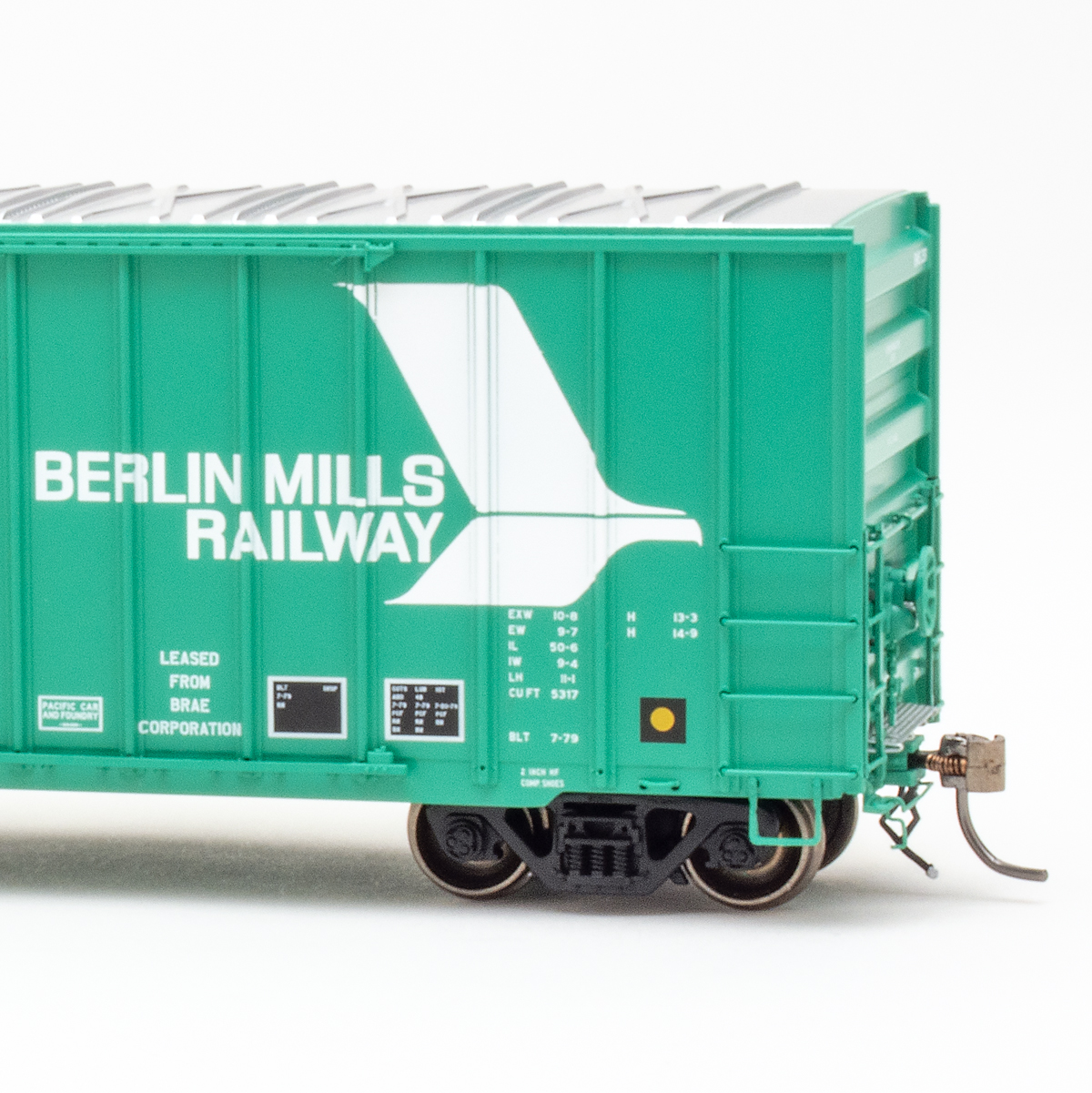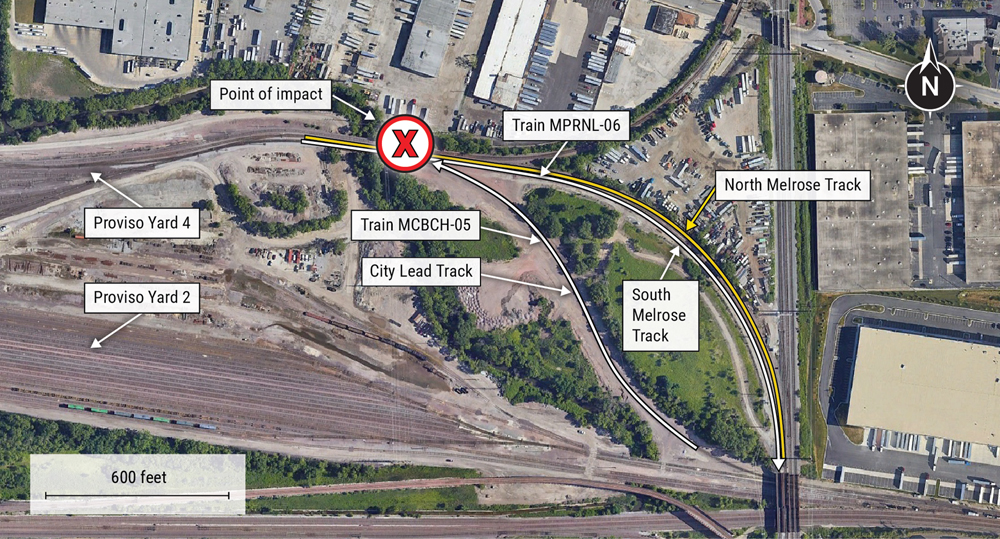McKEES ROCKS, Pa. — CSX Transportation has closed its Pittsburgh-area intermodal terminal, which opened in September 2017 as the last major element of the National Gateway Initiative double-stack clearance project.
CSX touted the terminal’s ability to allow shippers in western Pennsylvania to shift freight from highway to rail. It initially served 40 destinations under the railroad’s hub-and-spoke intermodal strategy.
But hub-and-spoke was scuttled a few months after the Pittsburgh terminal opened as CSX aimed to reduce costs and boost intermodal profitability under then-CEO E. Hunter Harrison.
CSX funded construction of the $60 million intermodal terminal. It was the final component of the $850 million National Gateway project, which used a combination of federal, state, and CSX funding to raise clearances on the former Baltimore & Ohio main line linking the Midwest with points on the Mid-Atlantic.
The 70-acre terminal built at a former Pittsburgh & Lake Erie yard had a capacity of 50,000 lifts annually.
CSX in March reached an agreement with Shell to lease the terminal, which will be converted to a storage-in-transit facility, the railroad says.
Shell is building a massive petrochemicals complex 30 miles northwest of Pittsburgh. The ethylene cracker in Potter Township will produce 1.6 million tons of polyethylene annually.
The plentiful supply of cheap natural gas is driving increased plastics production in North America. Rail-hauled plastics traffic is expected to grow 3% annually over the next decade.
Plastic pellets typically are shipped in covered hoppers. On average, CSX earns more than five times as much revenue from a carload of chemicals than it does from an intermodal container.
Revenue for containers originating and terminating in Pittsburgh would be lower than the CSX average, however, because of relatively short hauls to and from the Steel City, which is less than 500 miles from Chicago and under 250 miles to Baltimore.
CSX’s intermodal network simplification, which resulted in low-volume Chicago interchange moves being made by rubber tires instead of steel wheels, likely contributed to the demise of the Pittsburgh terminal, intermodal analyst Larry Gross says.
“Pittsburgh would have been a different story if everything east-west was not grounded in Chicago for rubber tire crosstown,” he says. “Then length of haul would not be an issue and there would surely be enough traffic to support it. But once the western railroad’s traffic is grounded in Chicago, then the remaining move effectively becomes Chicago-Pittsburgh, 460 miles. They could make it work if they wanted to, but obviously the profit margin was regarded as inadequate.”
CSX’s network also was not well-suited to divert north-south truck traffic to intermodal to and from the Pittsburgh area, he notes.
“It would have been interesting if they had tried to support the terminal with a mixed train strategy,” Gross says. “Put the intermodal into the precision mixed train network and provide low-cost, slower but reliable transit times.”
CSX says it can serve Pittsburgh via other intermodal terminals.
“CSX continually reviews its system and makes regular service adjustments to meet evolving business needs. Customer shipments through the area will be rerouted to other lanes providing efficient, reliable intermodal service on the CSX network,” the railroad said in a statement.















Another casualty of psr?
First, the shut-down of the facility in W. virginia and now this. Is there something in the water at CSX headquarters in Ja cksonville? A lot of Floridea water has a sulfurous taste.
Thanks Bill Stephens. I’ve been experimenting with not including a blank line between paragraphs and that hasn’t appeared to cause loss of content. But I haven’t gone very long yet. Possibly a benefit, I tend to oververbosity.
Spend 60 million to build something then close it? Sounds like the same CSX/Chessie I worked for. Chessie built a nice diesel servicing facility at Walbridge/Toledo back in the 70’s. I think it was open for a mere matter of weeks then closed. Here in our terminal they recently built a really decent fueling facility, state of the art, then closed. Really nice engine house with a dedicated crew that did great work. Oh and a new million dollar roofing system…Closed. Rebuilt the yard here in town, major work, now reduced drastically.
East west mergers would make sense. It will not happen until the current Class 1s stop making money by disengaging in general commerce of transportation. The current crop of suits like their lofty positions. The railroads will continue to shift to bulk commodities. Once industry moves out of china and more production shifts back on shore, even intermodal will continue to decline as a share of the freight market. At some point, this madness ought to be stopped, but I don’t see anything on the horizon to change the picture.
Paul Bouzide — a habit I still occasionally employ, developed during the days of dial up modems that would crash at critical moments, is to work with long written documents on a separate word processing program, get it to where I wanted it, then, save, cut and paste etc. If you really wanna put in that level of effort, you might try that. I find your comments informative.
@Paul Bouzide: I think the commenting side of the house has been cutting in and out, which could be why your comments have been truncated. Nothing but gremlins at work here. Please keep the comments coming.
Gerald. KC won’t work.. It’s called rates. BNSF and UP are not going to short haul themselves to KC, MO.. Charles single line service reduces operating cost. A plus for both Class 1’s and Customers
GERALD – Thanks for your perspective. All those dollars for North Baltimore then our friend, hero and role model EHH shut it down.I don’t know if there will ever be an east-west merger but I don’t see the necessity for one. Just run the damn trains.
Charles, Paul and Paul,Solution for smaller blocks between city pairs is doing your block swapping in route, that was the idea behind North Baltimore, OH before someone didn’t understand hub and spoke service for intermodal. A lot of steel wheel interchange for intermodal could take place in Kansas City, that would give both carriers sufficient mileage to make it worth while(of course CSX would probably be out in most lanes unless they wanted to have a haulage agreement on KCS between KC and STL).
Once again the Chicago divide wins.. How many more reductions in IM service east of Chicago until someone gets the idea to finally create single line service…
RICH STEENWYK — Why can’t intermodal cross Chicago? Because today’s generation of rail managers have the same lack of imagination as their 1950’s and 1960’s predecessors. Those of us of a certain age (people old enough to have been TRAINS-MAG readers in the DPM era) will know the meaning of this question: —- “A pig can cross Chicago, why not a passenger?” There’s no more pigs (as in swine) by rail, so now the question is inverted: “Coal can cross Chicago, why not a piggyback?” (Or COFC, steamship or domestic). The answer to the question is that generation after generation of rail management has pig fat for brains. I simply don’t buy it that intermodal couldn’t cross Chicago. Everything else does. How about all that Wyoming coal? It doesn’t get drayed across Chicago, nor does merchandise. I call BS. Norfolk Southern trains from Elkhart cross Chicago to BNSF Cicero. Any Western rail manager worth half his salary talking to an Eastern rail manager half his salary. could figure this one out. Or “her” salary. Twenty or thirty years ago it was a “her” Western rail manager who figured out how to get iron ore off the Wisconsin Central to a steel plant (now closed) in Utah. Crossing Chicago.
@Charles Landey I mostly agree, but steel wheel interchange is more difficult than most appreciate. Unless it’s a through train like the hot one off the BNSF for NYC, this involves smaller block switch outs and interchange, that isn’t well served waiting for other interchange traffic heading to the same receiving road. And so a dreaded train start with crew requirements for a short low margin train. Then there’s friction with the receiving road resourcing integrating the cut into a departing train. And if the length of haul for the receiving road is short there can be less incentive to prioritize good service. All arguments for transcontinental merger where in some cases Chicago can be bypassed.
@Robert Hoover I appreciate the appreciation. The problem was on the Trains side though, my comments were intact (though multiple paragraphs) when I hit post. Big chunks of the middle of the comment were deleted.
One would think today’s pre-blocking, PSR-like train-combining (15k ft, anyone), and DPUs could result in a larger eastbound container train on a Western rail network just being split into pieces for steel-wheel interchange and run-through continuation at Chicago.Too bad profit margins on intermodal are so thin that they can’t fund putting back some of the tracks that were once there so efficient transfers could be made; right now, there’s too many trains vying for too little track.
PAUL DYSON – Which is why ATSF bought TP&W in the 1980’s for intermodal into northwest Indiana. (Then turned around and spun it off.) Draying to Detroit, Cleveland, Indianapolis, Cincinnati etc. out of Remington, Indiana, instead of Chicago. Made sense to me and I never figured out why it didn’t work. That is until in 1998 I happened upon the tracks in question on a visit to Illinois – tracks not to ATSF standards.
Okay I give up. Comment cut again and it makes no sense anymore. I actually did suggest an (unrealistic) solution to make transcontinental merger shipper acceptable.
The problem Paul Dyson is that if a relatively healthy western like BNSF for instance were to propose merging or acquiring an eastern, angry shippers would scream to high heaven for lousy service and accessorials at duopoly rates. And I wouldn’t blame them.Okay I guess centrists can tilt at windmills too.
Nothing has changed in over 30 years. I used to run an LTL operation out of Los Angeles with plenty of business into IN, OH, PA and MI. Santa Fe ran an exemplary service into Chicago, but everything was rubber tire east of there. We even hauled piggyback trailers to and from NJ out of Chicago to save a day. Geographical monopolies will never solve this problem. Time to try something else.
Oooh looks like Trains Mag is chopping out the middle of long comments like my last one. Or many of mine for that matter. Guess I need to spend more time commenting elsewhere. Plenty of room for at best impractical and at worst dangerous right wing and left wing political windmill tilting tho. It left out a lot I wrote about Larry Gross’s idea about using the carload network to serve a Pittsburgh ramp until demonstrated good timekeeping turns a low density lane into a high density one.
Someone tell me again that transcontinental merger wouldn’t help reduce 460 mile drays which kill the intermodal value proposition. As does the lift-dray-lift cost in time and $ of rubber tire interchange at the “gateways”. And that’s lift-dray-lift in the best case. When the drayman isn’t around and the cut off for the next train is missed it can be as bad as lift-ground-lift-dray-lift-ground-lift. no intermodal business of any sort using a Pittsburgh ramp can be developed. At least not by CSX. Have you seen all the moving parts associated with exporting pellets from the Houston area to the LA/LB ports?
“EHH” is Everett H. Harriman, of Union Pacific. Hunter Harrison doesn’t deserve the initials.
Slowly but surely going out of business, just as intended.
How many customers did they lose by continuing to “drink EHH’s koolaid”!